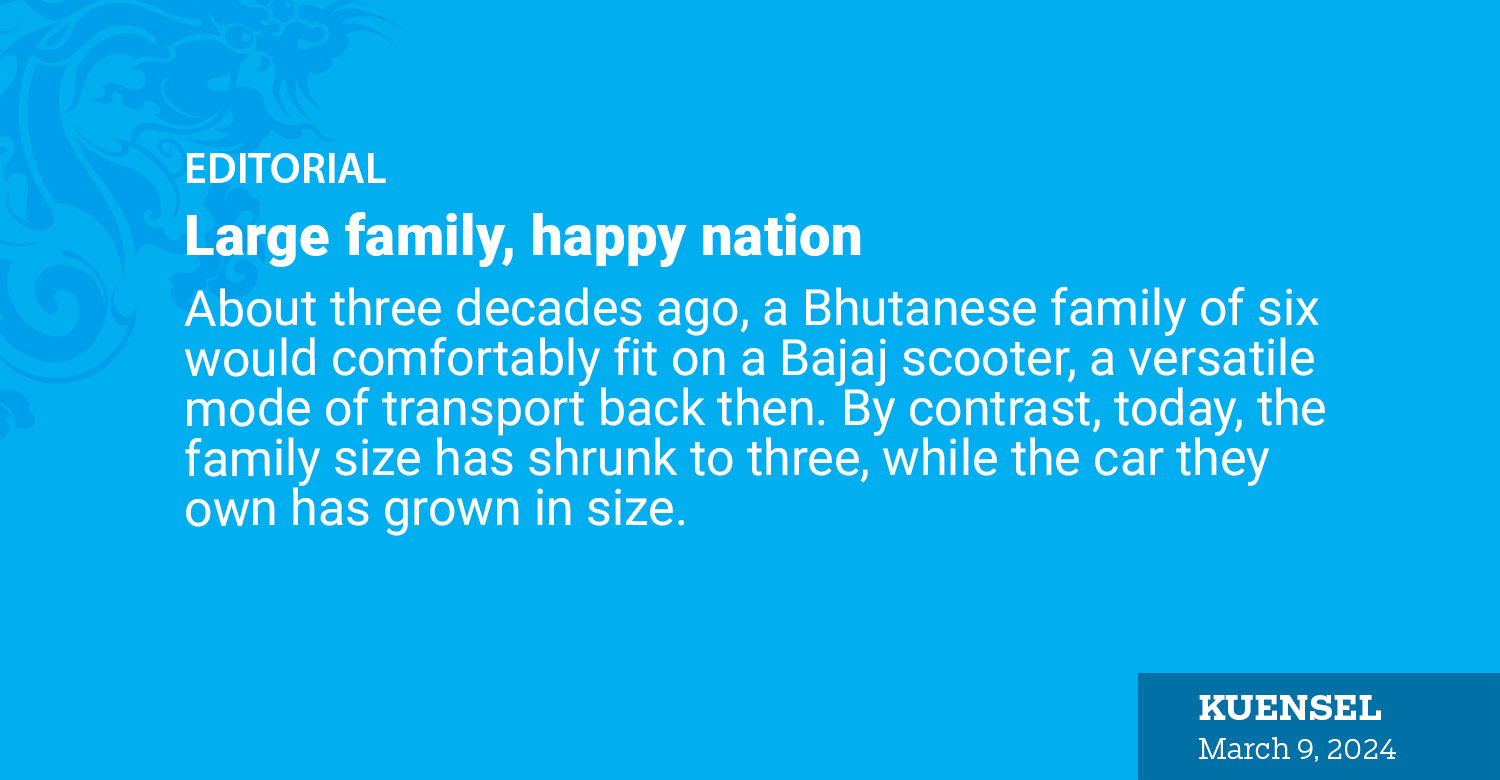About three decades ago, a Bhutanese family of six would comfortably fit on a Bajaj scooter, a versatile mode of transport back then. By contrast, today, the family size has shrunk to three, while the car they own has grown in size.
The fertility rate (total birth per woman) towards the beginning of the planned development in the 1960s, was 6.4 which over the past 60 years plummeted to 1.7, raising concerns on long-term replacement of young productive workforce.
Various factors attributed to this slowing birth rate. In the 1960s, when agriculture was the mainstay, the belief was that two hands was better than a mouth to feed, as farms needed helping hands. Modernisation influenced the family, its values, and structure where children came to be considered an economic drain by a new composition in the social strata – the officer-goers. The demographic economic paradox became visible as educated and career-oriented couples preferred to have lesser children or delayed having one.
The highly successful social behaviour change campaign on family planning pitched on the slogan ‘small family, happy family’ further convinced Bhutanese to restrict to just one or two children, significantly bringing down the fertility rate. Many parents today recall the demonstration of wearing condoms at almost every public gathering. In private, other forms of contraception were also made easily accessible.
If the objective was to control the population growth and divert the attention to improving the quality of life, social and economic services, it was a commendable success. However, the quality of life, social and economic services are subject for further deliberation. The declining fertility rate has today become a national concern, to the extent such that a 0.3 increase in 2023 is declared significant as it was inching closer to the replacement rate.
Consequences of the low birth rate had been manifesting. Enrolment in primary schools had been low, or none altogether in some cases, forcing schools to shut down, or merge the few children into multi-grade classrooms. While the community’s sentiments and attachment have kept many community primary schools open, educators understand the need to close them and pool resources into consolidated schools. Replacement had also become urgent as a significant number of the country’s 26 percent youth population of 15-24 years, were outbound for economic activities creating a vacuum for young workforce back home.
Our challenge would be to convince young Bhutanese couples to have more children in the face of high living expenses and a lack of support in raising children. It is common to see working parents rushing daily from daycare centres to schools to their offices. Traditional arrangements of grandparents looking after children at home are not practiced among most families, and household help for hire is not readily available.
As seen in other countries facing low birth rates, a long-term solution could hinge on state-funded reproductive health and welfare care to achieve the required birth rates and have a young population contributing to the country’s progress.
Additionally, implementing initiatives for a working-mother-friendly environment in public and private offices, support for mothers with young children, and support for parents with more children could help achieve the goal of a ‘large family, happy nation.’


